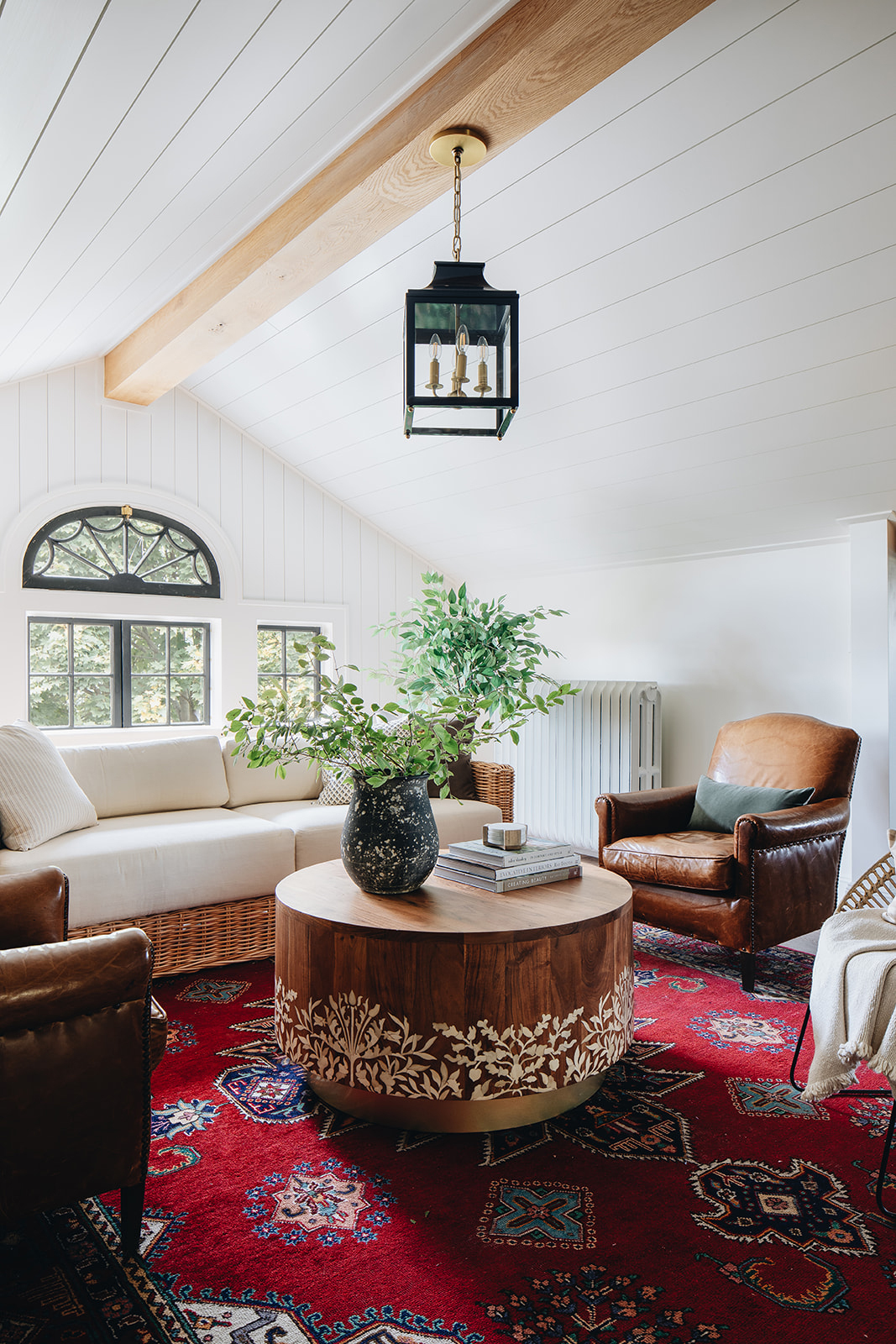We may earn revenue from the products available on this page and participate in affiliate programs.
Most of us follow convention when hanging lights. We naturally place fixtures over the kitchen island, dining table, and maybe in the entry hall. It is increasingly rare to see a chandelier in a living room. And the popularity of open living/dining/kitchen spaces has accelerated the death of the living room pendant lamp, with focus firmly fixed on the dining table.
Living rooms often feature only recessed can lights and a few table lamps. But why are we depriving our living room, the space we entertain in and relax in, of a stunning statement light? Whether you have a separate living room or not, try hanging a light over your coffee table or sectional. Decorative fixtures are the jewelry of the home, so why not add a few more?
Try a Different Style
A chandelier presents the perfect opportunity to introduce a new style in your room. A modern fixture in a traditional space or vice versa adds an unexpected twist. Select a large, visually substantial option to make a statement. Decorative lighting can stand alone in a room and doesn’t have to blend with other design elements.
Keep It Light
A large chandelier over a seating area can feel heavy and a bit foreboding. Consider your materials and finishes before buying. Reflective metals, glass, and Lucite will add style and illumination without weight. Fixtures with small clusters of LED bulbs are more delicate and playful overhead.
Pair With Cocktail Tables
A natural place to install a hanging fixture is over a coffee table, just as you would over a dining table. This placement allows you to hang the light lower and enjoy more decorative details up close. Make sure you can see guests across the room and you don’t bump your head when reaching for a drink. For style inspiration, look to your furnishings and textiles.
Center It
If you don’t have a central focus to your seating arrangement or if you regularly rearrange furniture, center a decorative light in the room. The fixture will act as an anchor in the space and an extension of the architecture. Remember, you will likely walk under it, so keep it close to the ceiling. Be sure the light relates to your decor so it does not feel adrift in the room. Try matching your color scheme or patterning.
Think Outside the Box
Try a less centralized location for an unexpected accent. Small pendants over a console table make for a unique vignette and add mood lighting. Do you have a games table or secondary seating area? Consider highlighting those tangential spaces with a statement fixture instead of the central seating area.
A Pair or More
For larger living spaces, a matched pair or even a set of multiple pendants can add style throughout. Space them evenly and hang them close to the ceiling. Linear pendants cover lots of area and help direct light to distant corners of a room.
Watch Your Head
Be sure to account for ceiling height. You don’t need high ceilings to hang statement lighting, but picking the right fixture is critical. Low ceilings are better suited to lights that look good placed close to the ceiling. Pendants that are wider than they are high or linear fixtures that stretch out across the ceiling work nicely. But round pendants or lanterns feel awkward hung too close to the ceiling.
Fixtures in high, vaulted spaces don’t need to be tall and narrow because high ceilings will support visually heavier chandeliers. Often, full, round lights feel good when surrounded by lots of air; look for pendants with similar width and height dimensions.
Mix, Don’t Match
If your living space is open to your dining and kitchen area, avoid the temptation to match fixtures from the same collection. A modern home should be filled with coordinated lighting, never matched lighting. However, it can be tricky to develop the right mix. Pick one element (finish, overall shape, line or shade type) and carry it through each light in the space to unify the design. Then enjoy selecting variations on a decorative theme.
Make a (Quiet) Statement
It is tempting to focus all your design efforts on one large statement chandelier. A bold piece often feels as though it should be the center of a room’s attention. However, a hanging light can add function and style without being an attention hog. If you already have a statement sofa or gorgeous fireplace mantel, an understated, elegant light will complement and not compete. Think: streamlined, classic, minimal, and clear.
